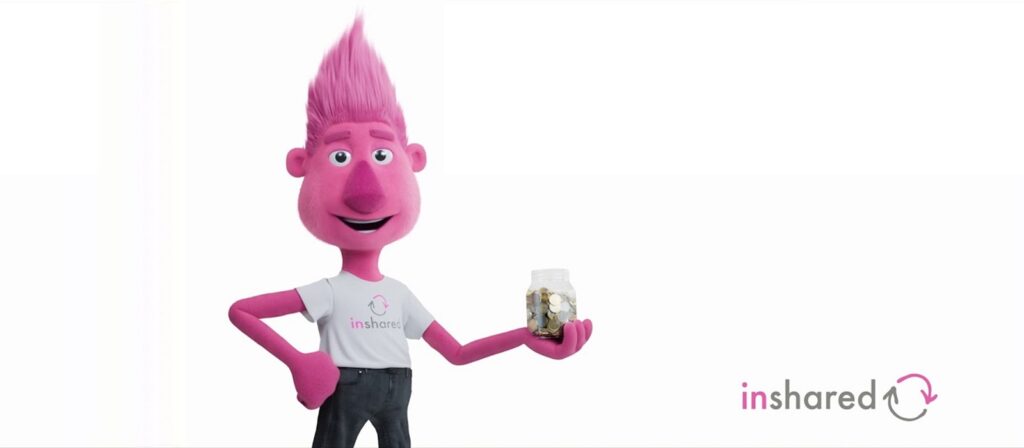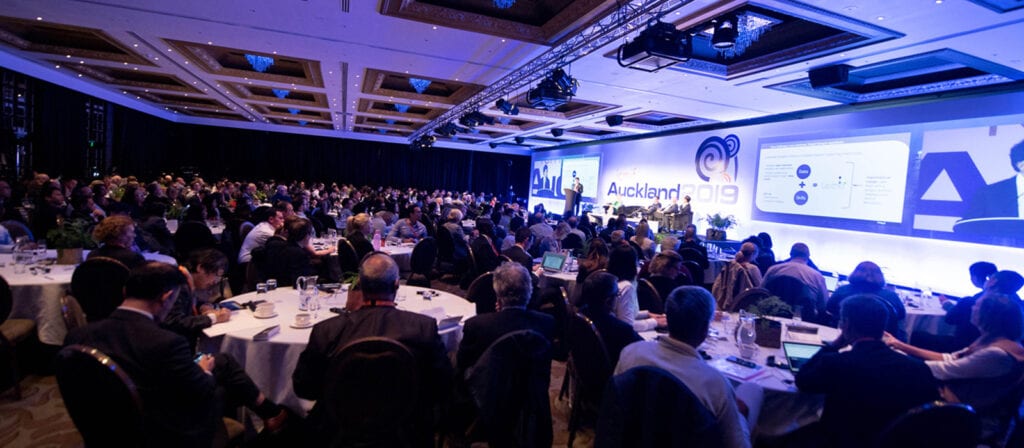Ben Telfer:
Hello, everyone, and welcome to today’s ICMIF webinar, “Exploration versus Exploitation: Innovation in Subscription-Based Insurance Models”. Today, we’ll hear the innovation journey of Belgian ICMIF member P&V, as they develop the first on-demand and subscription-based products for bicycle insurance in Belgium. This product has already won a number of awards and has been termed the “Netflix for insurance”.
I’m very pleased to welcome Steven Eliaerts, he is the Product Manager of Ecosystem Platforms and also Clémentine Cazelles who is Product Manager for Non-Life SME & Institutional. Steven and Clémentine, I’m very pleased you could join us today and I will hand over to you, Steven.
Steven Eliaerts:
Thank you, Ben. Good afternoon everybody and thank you for giving us a platform to present our innovation of which we’re very proud to be P&V Group. I will be giving a small introduction or an overview of some of the partnerships we have developed over the years and we’ve also implemented the bike insurance with one of our partners. So it will be a short introduction of what we’ve learned over the years and then Clementine will explain the product and how we did. So on the first slide, it is a small introduction on what I’m going to present today. This was in the introduction or invitation that you got to participate in the webinar so I’ll not spend too much time on that.
Partnership learnings. So P&V Group, for quite a few years now, has collaborated with diversity of partners in different fields. Why to accelerate product process or commercial testing and innovation in different fields and on the first slide, we’ll see a little bit of theories. So to increase other success of working with partners at scale. On the following slides, we’ll give a few examples of some of those partnerships and what we try to do, what went right, and what we learned to implement in the next partnership. So when can working with partners add value for your organization? That’s always the first question to ask. You have to look for the right partner. Obviously that’s the first question.
Usually, at P&V, we look for partners that are outside of the core insurance skills. We are as adjourning organizations, we have skills in the product development, in the pricing, in underwriting, etc. So we were looking for partners that bring value outside those core insurance skills. We look for partners that are ready to scale which means their technology but also their internal governance, rather procedures are ready for industrialization that if the tests are positive then we can immediately move to the next stage which is commercialization at scale.
We’re also looking at partners that provide us access to new data or to new customers. For example, internal metrics for commercial or commercial partnerships that provides data on customers and allow us to price them better or that where the customers are present that we can develop. What’s also important in choosing your partners is obviously, cost but also size from our experience. We are a mid-size Belgian insurer. So you should select your partner that has a similar size, not as the size of an insurance but where you’re important enough for them that they will invest in the relationship as you have to as an insurer. And obviously your approach will fit this is a long-term engagement usually working with partners. So you should have a personal clique that you can collaborate, develop, and create with them overall. Which, brings us to some internal questions you have to ask first. Are you going to leave the room for co-creation where you can collect the internal expertise to develop something with your partner but where you can also rely or integrate the expertise of your partner in your internal processes or in your development.
As already touched upon this long-term active management partnership, so it’s a continuous alignment of all the stakeholders and maintained focus on extracting that value. You should be positive you have all the skills and resources to exploit that value into it internally but also at the partner. A little difference with… Sometimes same men… I’ll go first to the fifth point, working with a partner is a partner decision but in general when you have a new strategy or something you want to develop or innovate, you should always evaluate doing it ourself. Is it technology we can buy or is it something where we want to partner with an external partner? And if you do partner externally, obviously you gain on the build costs. You have very visible higher pocket costs internally that will continually be maintained on your budget as long as the partnership holds. But which also allows you to more easily build business case and integrally evaluate whether the partnership is successful.
So a few examples… Already touched upon it, the most difficult is aligning all the stakeholders is what we’ve learned over the years in practice. Some examples, RetailSonar is some partner with whom we worked in the past which is a big data platform that usually works for the retail sector and where we partnered with them to find the best locations to implement a new agency. An agency is where they have their agents… Agents are working to sell insurance. And so where is the best location to implement those? Based on open-data, traffic data, internal data or whether good locations are existing, locate of existing agencies. Very successful at the start but what we learned there is very complex data management especially renewing al the internal data obviously, your statements but sometimes also profitability of certain statements, profitability of certain regions, profitability incurred of certain… In home, of ownership versus renters.
So all that has to be maintained is complex, and otherwise the partnership and the results that come out of it lose there value. So that is something we do in mix partnership where we kind of externalize the data management where we partnered with Rialto where we, in co-creation with them, as touched upon before, we created a rebuilding value based on open data and minimum input of questions which was a question we got from our network and from customers. Successful and implemented directly into our front and our back office system.
And this is also an email site that works with a lot of front end customers, where you can get the rebuilding value, the selling value of your home. So that could also be an opportunity to sell insurance or home insurance. What did we learn in that partnership? Secretarial management, well the improvement is parallel management. So what do we do first? Well first the whole project of modeling the rebuilding value, and only then we started implementing it.
So in the next partnership, we moved much more to management, and the importance of your assests being ready, and if your API’s or focused still need to see market, which we are as a insurer we work with agents and brokers. If you want to go there and sell B to C insurances, well then that has an impact on the number of questions you can ask. So that that asset has to be ready before you can exploit that B to C insurance. So some of those lessons learnt, we implemented and we recovered. Recoveries are telematics, now you proposition, that’s where you can download an app, install a box and where we try to engage customers, convert them to paying customers, trying to influence their driving behavior and sell them additional coverages for all things. What did we learn there? Focus on our core skills and implement them into it, process with our existing assests.
When we develop the custom architecture, which is always more difficult than off the shelf. And focus more on new customer value. Which is what we implemented more in the bike insurance but I’ll let Clémentine present the products and how we applied those lessons.
Clémentine Cazelles:
So we analyze what all these in the streaming industry have in common. Well first you can join when ever you want, its available on any type of support, you can subscribe in a few clicks very easy. Its 100% digital, no paper and it’s a monthly fee, so you can stop when ever you want.
And we decided to apply this successful characteristic to our bike product, so you can rely on your insurance when and where you want and you need it, it’s for any type of bikes and even more so, we will discuss it later. You can activate your insurance in a few clicks, it is 100% digital so no paper and it is a monthly fee. As a client I can stop, whenever I want.
And above that we also added two additional features linked to the corporate duty near or P&V, so within the partnerships to prove secret and safety of our clients, and also our client can actively support the development of mobility, and I will explain it later.
So now I will go deeper into the different characteristics, so our bike insurance product is actually covering you on the whole life cycle of well when you’re driving your bike, but even when you’re are home and so on and so forth. You are on your bike, you’re protected. You have an incident, you’re protected. We have an assistant 24/7 . You have an accident, you’re protected but also your passenger and your bike, at destination your bike is also protected, it’s still covered against theft and also protected if you have a litigation with for instance your repair shop, thanks to our legal protection.
Our product is quite simple but quite complete as well. As for any type of bike and even more, indeed it’s for bikes, without any exception and distinction should it be bike, a mountain bike, and so on and so forth. But even more we are also covering all type of soft immobility solution even electric wheel chairs.
Its 100% digital, you can add to your insurance in just a few clicks, so process is the following, so your agent, your P&V agent will start the submission process, by answering a few questions about the risk, type of bike and also about the type of coverage you want. Then an email is sent to client and the client finalizes the submission. You will have to upload some pictures, pictures of the invoices, but also pictures of the bike. Then he will have to enter his credit card details and by clicking submit the contract is issued and the client is covered.
Claims are also 100% online. So we have developed a simple online form, accessible at the customer zone, the client will have to upload pictures, and the agent is always informed. Its a monthly fee, as a client I can stop whenever I want. I will pay via credit card only, we have set up automatic reminders, if needed for instance if the credit card details are not up to date, the client can then go to customer zone and update his credit card details. if the payment is still unsuccessful then we also set up an automatic cancellation process. But as a client I can stop whenever I want, meaning it’s a monthly contract so it’s not one year, it’s a monthly renewable contract. So the client can stop his policy even one day before the monthly renewal date. It’s done just with client zone so it’s 100% digital, we don’t ask any justification and the agent is always informed.
Then we added our coooperative DNA’s, so every month the client will receive an email with some tips and tricks we have written in partnership with the two national bike association from Belgium. We also provide promo codes for the client to get discount on some on some items that increase safety and security, and as the client can also actively support the development of soft mobility in Belgium.
If the client doesn’t have any claims during twelve consecutive months, P&V will give back up to six percent of the premium to association supporting the development of soft mobility. It has been quite a success to the launch of the product. For instance when we launched it, we received an award about innovation, our approach our prevention approach is quite well recognized because instead of only communicating we also say we will give back some part of your premium to increase safety on the road. Some figures after one year we can see that we almost sold 1000 policies, and even if the client can cancel at anytime we had only 55 lapses, and we had 16 claims.
Okay so again some theory and some what we did on the field. Actually it’s the objective of this was supposed to test product quite rapidly, to test also all digital journeys and to see if we can have different business model, the idea was also to have shorter time to market, because when you want to launch a product with only an assistant it take ages and also the objective was to be very aedile and to have a low risk investment, to achieve all these objectives actually what we did.
We had to do a lot of simplifications to get, to be 100% digital it means that we don’t have any exceptions. I as a client fits in the product, the product can be described. Again with the cancellation it’s only adjusted on customer zone. There is no paper piece, cancellation process, for the payment and recovery process again, everything has been thought about straight to process. And to achieve this we also had to get a very simple product so have a base coverage with theft, motor damage and assistance.
And two options, that’s all complexity of our product. Pricing, we don’t have a lot of segmentation and from a legal point of view we also try to get as simple as possible. Our product is omni channel, even if the first launch was only for agents, we thought our idea but having this product ready for other integration in other channels which has broke our split from all direct. It was really short, so we managed to launch this product within three months from scratch. It took us only three months to do it, it was quite a while, we rocking in spirit of two to three weeks but also we selected the partner because he had experience in the insurance industry, but also experience in products like philosophy.
So this partner had an existing support product testing, and last but not least the budget was limited, we managed to this within three months but also below 100K Euros.
And now I will leave the floor to Steven.
Steven Eliaerts:
I think I will be fair in my screen now. So as Clementine explained on how we did it, and that we prepared, well given the positive feedback we had on the different element of last year. This year we also implemented a new channel, and based on the same approach and infrastructure on the same product that was already available. So about two weeks ago we launched it and we would like to give you a quick overview of this product, it was not only the product putting it directly but also it went together with a lot of new communication around who should we approach online? which customer segments or other segments online would be interested in which of the US based of the product and try to take on potential customers online?
Before we go too much in the details of the content. But this is Roulez our new product page that mentions a lot of our US piece or earn the same as Clementine already explained.
Also legally information of course, payment by credit card and you can calculate your premium. To show you how easy and quick it is for a potential customer to subscribe, as you can see all the types of bikes and mobility, let’s call it means are available. So you just input your price, I think the average price is around 3000 Euros for the, well not for the average bike, but for the average bike that is insured. It can only have one year, that is the maximum age that the bike can have. Then you immediately get your premium.
So already explained, we have a base coverage. And then you can choose to have additional coverages, corporal damage, and the only prediction. So I will just choose the whole formula, you can see the journey you have to go, so it’s in French but it’s just some of the conditions. Is this your first insurance? Just say yes.Based on the price of your bike, legally you are required to have an anti-theft device so you have to prove that you have this. When did you buy your bike? So let’s just it can have maximum one year. All this data will also be available in the customer zone. I’m just going to input, here I have to input the invoice which is required for you to finish your, oh sorry this is the right side of the bike so you have to provide a picture of the right side of your bike, the left side of your bike, so if you have a claim that our claims can verify that it wasn’t pre-existing.
Then you have to provide the invoice of your bike and of any accessories you want to co-insure. So here I have the invoice, as you can see it posts quite quickly. Enter your name, you have to provide your email address, cause that’s where the final contract will be sent, as Clementine already explained. Add your phone number, which I think is also used for the assistance if they want to call you. As already explained, so even though you can subscribe the insurance for your bike, we will still ask you to select an agent near where you live.
Someone you can approach for any questions, or should you have a claim they will assist you. And this agent will by the way, also be compensated for this with commission. All the legal information, is also present of course. The overview, you have to confirm that you have read the general conditions and of the viewers will know what that is. Which we have also validated with our legal colleagues that we can show it like this. That you can have a monthly recurring payment on your credit card and the whole legislation which means that you’re allowed to cancel the contract within 14 days.
And that you will be reimbursed pro rata for the days you have been covered. After those 14 days you will always be insured for a full month. As when we move to the payments screen now, I’m going to call it the finish, I think you know what a payment screen is. And then you have your policies and then you get your contract in your inbox.
And then that’s it you’re insured, and in that email you will also get access to, how to access the customer zone but I think Clementine will give a small final view on the customer zone and I think the multi email right?
Clémentine Cazelles:
So once you have finalized and you sent your, and you’ve submitted your credit card details you will receive an email, this email contains some information for instance this is a remote selling contract so it explains that you can cancel your contract within 14 days and then get reimbursed for the rest of the month. But you also have phone number for assistance and you also have a link to your client zone.
To get to your client zone actually, so you have all your policies and we select this one, and then on your claims you have all the details. So you have all the details on your contract, the type of vehicles, the brands and the amounts to be covered, names and address and so on and so forth.
You also have another few of your invoice. So even invoices are digital, so you can see your premiums, your taxes and the totals. You can see also, you can update your bank credit cards and credit card details. My clicking on this, you can have a look at all the documents you’ve been rated. Also the terms and conditions but also your contracts, so you will receive your contract in the email but also you can find it back in your customer zone.
And also the pictures you have uploaded, and so on and so forth. Now to additional buttons here, this one is if I want to notify a claim, so you can enter this and then you have a 100% digital process where you have to fill in some additional information, so for instance when the claim occurs, the date, where. And then you have to fill in all the information.
And then you have all the information concerning the policy holder, you can also introduce your bank account just so that the claim is yours, and the settlement is shorter and so on and so forth.
And as explained you also add another button which is actually cancellation, where you can say I want to cancel my contract. And first let me explain what in fact if you cancel your contract, so if you cancel your contract you will be, you won’t be covered anymore. So we have two types of messaging depending on if it has been solved remotely or not. So if it has been solved remotely you are not covered as from today. So meaning you have 14, well if you are still in the 14 days from the purchase date and then if not it will be from the next renewal date.
You won’t be covered anymore as from that date, just say “yes I am considering to cancel my contract” and then my contract is canceled. And you will see that I have a disclaimer here, to say your contract has been canceled and that I cannot click anymore on the button.
So yes the monthly email. This is an example of the monthly email, so it’s an email sent every month to all of our clients. In that email you can see actually it’s a number of results of claims so that the client already knows how many months, well when he will be okay to get, when this part of his premium will be given back to the association for instance, here we have three months. Well the contract is more than, was more than, was subscribed last year so we already have one year and three months, without any claim.
And then you have your monthly tips here. And then you have a reminder here about your clientele access, and some promo code to get discount on specific items linked to protection and safety of the drivers.
This is the end of the demo.
Ben Telfer:
Thank you very much Clementine and Steven. That was great overview presentation of all your partnerships, your strategy for the Velo and also the demo of the e-commerce platform, great to see the platform that you have just developed and you say two weeks ago you launched it?
Steven Eliaerts:
Yes, it was always stressing in the end but we got there.
Ben Telfer:
Thank you for sharing it with us. I’m sure everyone found it interesting to see, very easy user-friendly experience and I’m sure your customers appreciate that.
First question for Steven, I will come to you first for this, talking about, you mentioned about the cooperative DNA of P&V, how does this influence how you partner with other organizations? Do you look to partner with companies that aline with the same values as P&V?
Steven Eliaerts:
I think it was mostly Clementine who mentioned that? So I don’t want to steal it, do you want to?
Clémentine Cazelles:
Well it depends on the type of partners, if we are looking at partnership such as KASKO sure the idea was to have partnership with institutions that are sharing the same philosophy, but I don’t know if we select or walking partners, depending on this.
Steven Eliaerts:
Everywhere? No I don’t think so. That’s where I think the selection criteria in the first slide are the most important one, do they add value to your business objectives? Of course one of those business objectives could be prevention, which it is for the P&V group as a whole. Which is why we chose to partner with KASKO and the other commercial partnerships, that you saw in the slides. And in the monthly email, but otherwise they are partners that can either well they can either deliver, I don’t think we chose a partner with whom we develop the bike product, because there were focused on prevention or DNA. No because they were like Clementine explained, they knew the insurance model and they had infrastructure that was ready, and they were ready to work with us.
So it’s not always an exclusive, a criteria that excludes certain parties, it depends on the object.
Ben Telfer:
Excellent thank you. Thank you Steven.
Question here about, do you have any data on the ages of customers that you have so far? The question sort of assumes that it’s more the younger generations and is this a product that’s marketed or aimed at younger customers?
Clémentine Cazelles:
The idea was to target, we had a lot of questions when we launched the product about race bikes, and stuff like that. So bikes are quite expensive even more than 10,000 Euros and we explained that it was not a corporate business or the target for this product.
The idea was more about families and commuters, meaning that while you’re in our corporate damage coverage we also include the fact that even if it’s you and your passengers that are covered.
Ben Telfer:
Steven is there sort of a marketing behind it? And the promotion is mostly at younger generations in Belgium or is it a case of it, it’s marketed to all demographics?
Steven Eliaerts:
It’s marketed to all demographics, and I think that this year in the e-commerce channel where we like I said, where we try to lead segments in US trees, I think we had three target segments. Excuse me if I missed something I have been on and off involved but one is not the older generation, because they are usually the ones who buy expensive electric bikes or more focused on the insurance and they have the means to do so and they are also more interested in assistance, if something happens we have the commuters and then indeed we have the young families and if I’m wrong sorry Clementine.
Ben Telfer:
Excellent thank you. Two very similar questions here, have just come in obviously since the pandemic started there is a lot more interest in pay as you go, pay as you drive or pay as you use and on demand insurance models, has that had much of an impact on the interest of fellows so far?
Steven Eliaerts:
Difficult to say. I would say at least in Belgium I would think more people are driving bikes, I think bike sales have increased even though Belgium is already a bike country. But they have increased further, I think during the pandemic so that has had a positive impact on sales, making it directly it’s difficult we haven’t done sales interviews on the structural bases per say.
Ben Telfer:
Thank you, Steven. The second or similar question is looking at, are you looking to taking any learning from what you have developed as the bicycle product into a car and motor insurance product that follows a pay as you drive similar model?
Steven Eliaerts:
I think Clementine already explained the simplification we have had to make, for sure e-commerce what we have just launched is also apart of developing other e-commerce products in the future. Which car and motor insurance would be the next logical steps, regarding the subscription model as Clementine explained we had to make choices, to make it a simplified as possible for example. So a lot of the assests have to be in place to make that possible, so we would have to evaluate if that’s from a technical prospective also possible for our older project, not only technical but also from what customers expect.
Are they going to buy car insurance that is owing monthly on your credit card? And reminder process with fully automatic, and so that would have to be evaluated I think.
Clémentine Cazelles:
I have the figures. We have average age of 50 years old.
Ben Telfer:
Is that surprising to you?
Clémentine Cazelles:
No, because well people who are buying very expensive bikes usually are retired people. More risk of various things, so it’s not a big surprise.
Ben Telfer:
That’s good to hear, I think we have got time for one more question. And this question actually mentions that they are based in Canada. They are saying that P&V have had a number of successes with your partnerships and involvement in eco systems in Canada, they have only just started exploring, well this compony has just started exploring eco system partnerships, what advice would you give in terms of what they should do, in terms of first steps and some of the biggest learning P&V have experienced?
Steven Eliaerts:
Well partnership is a means to get your goal, so define your goal first and then you look at partners that can assist you in delivering that goal. I think in bike insurance, okay we wanted to test the bike insurance quickly because they were internal constraints.
Once that was clear, we looked to partner that with consistence in that, not the other way around so what do you want to test? What’s your value proposition? Or what’s your customer need? Or then need of your network?
Once you have that clear you can look for a partner, that can assist you in delivering that, that in general how I would recommend the process. Instead of something, there is all sorts of partners, it’s unmanageable everything that can be done. So it has to be patient on what you want to achieve. Not on some, well anything that all of the partners can deliver, because then you will get lost.
Ben Telfer:
Thank you to all.
The above text has been produced by machine transcription from the webinar recording. ICMIF has made every effort to ensure that transcriptions are as accurate as possible, however, in some cases some text may be incomplete or inaccurate due to inaudible passages or transcription errors. Listening to or watching the webinar recording will allow you to hear the full text as delivered during the webinar but this is available in English only. Our transcriptions are provided to enable members to select the language of their choosing using the dropdown menu above.





